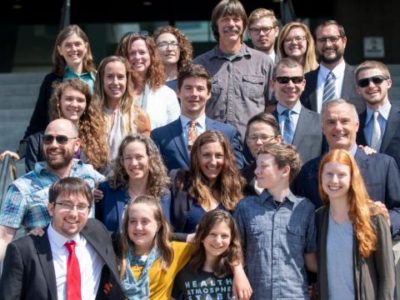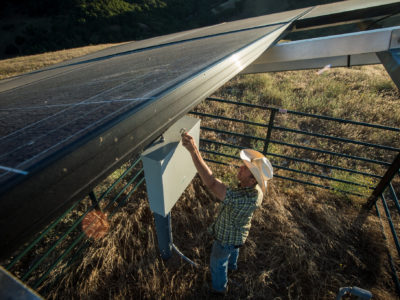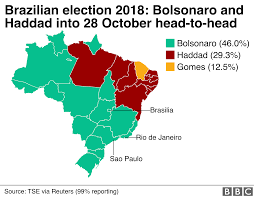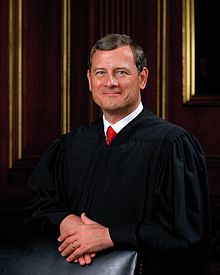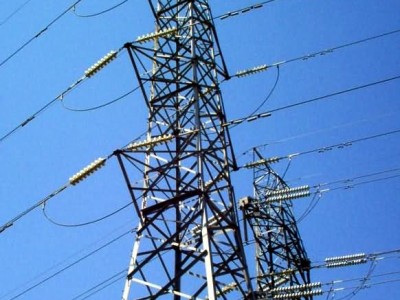Climate Change
On the future of climate policy
A response to William Nordhaus’s comments about how essential carbon taxes are to addressing climate change
William Nordhaus recently (and deservedly) won the Nobel Prize for Economics for his work on the economic implications of climate change and policies to respond to climate change. In the press coverage after the award, some comments were attributed to Nordhaus that I think are important to consider in more depth – in part because …
Continue reading “On the future of climate policy”
CONTINUE READINGWhat to Make of Chief Justice Roberts’ Stay of the Juliana Case
It’s only temporary but stay tuned
Last Friday, as Rick Frank previously blogged, Chief Justice Roberts put a temporary halt to the Juliana v. United States trial –the Juliana case was brought by a group of children alleging that the United States has violated the public trust doctrine and various provisions of the US. Constitution in failing to protect them from the ravages …
Continue reading “What to Make of Chief Justice Roberts’ Stay of the Juliana Case”
CONTINUE READINGAmerican Journal of International Law Publishes Symposium on Climate Change Localism
The online alter ego of the American Journal of International Law, AJIL Unbound, has just published its symposium on Climate Change Localism. The symposium explores the implications of subnational actors’ efforts to address climate change. The explosion of initiatives and declarations in recent years outside the federal government, ranging from state and local governments to …
CONTINUE READINGAnother Scary Election (But Not Here)
An election next Sunday has implications for the entire planet.
I hate to give you something else to freak out about in our current Age of Anxiety, but there’s a very worrisome presidential election next Sunday. No, I haven’t completely lost it – the presidential race isn’t here, it’s in Brazil. The election pits a dangerous populist against a highly competent but colorless Establishment candidate. …
Continue reading “Another Scary Election (But Not Here)”
CONTINUE READINGSupreme Court Stays Upcoming Juliana Trial
Chief Justice Roberts’ Order a Major Win for the Trump Administration
The presently-constituted U.S. Supreme Court doesn’t seem to care for climate change litigation or regulation. On Friday the Supreme Court took the extraordinary step of freezing pending discovery and the scheduled October 29th trial date in the closely-watched Juliana v. United States litigation. In a brief order, Chief Justice Roberts stayed all district court proceedings …
Continue reading “Supreme Court Stays Upcoming Juliana Trial”
CONTINUE READINGModernizing the Grid
Utilities are spending billions of dollars to make the grid more reliable and sustainable.
In my last post, I talked about how Obama’s Clean Power plan was the right response to a changing grid. The grid is in the process of changing even more. Itwas designed for some relatively straightforward tasks. The main power plants, mostly burning coal (but sometimes natural gas or nuclear energy), ran day and night. …
Continue reading “Modernizing the Grid”
CONTINUE READINGLet’s Make A Deal
What Should Environmentalists Give Up – and Demand – For A Carbon Tax?
A nice editorial from the Los Angeles Times about the proposed carbon tax being offered by some Republicans under the front group Americans for Carbon Dividends, most notably former Secretaries of State James Baker and George Shultz. Exxon-Mobil is even throwing $1 million into the effort — chump change for such a corporate behemoth. The Times …
Continue reading “Let’s Make A Deal”
CONTINUE READINGComments on proposed ESA rule changes
Law professors submit detailed comments on proposed changes to regulations that implement the Endangered Species Act
I’ve posted earlier about proposals by the Trump Administration to make significant changes to the regulations implementing the Endangered Species Act, some of the most substantial revisions to those regulations since they were overhauled in the early 1980s. A group of environmental law professors (including me) submitted comments on those proposed rules last month, with …
Continue reading “Comments on proposed ESA rule changes”
CONTINUE READINGA Potentially Important Climate Change Court Ruling in the Netherlands
A Dutch environmental organization surprisingly won its novel climate change lawsuit when the government appealed.
Although I am in the midst of a series of blog posts (1, 2, 3) regarding novel technologies in the recent special report of the Intergovernmental Panel on Climate Change (IPCC), I take a brief detour to report on a court ruling in the Netherlands regarding climate change. Although I am skeptical of its impact …
Continue reading “A Potentially Important Climate Change Court Ruling in the Netherlands”
CONTINUE READINGGetting Kavanaugh’s Vote to Uphold Climate Change Regulation
Environmentalists Have a New Secret Weapon
Not for nothing was Brett Kavanaugh referred to as “Voldemort” by Center for Biological Diversity counsel Bill Snape: he is quite hostile to environmental regulation and will freely rewrite statutes to constrict EPA authority. But now environmentalists have a new ace up their sleeves: The price of beer could rise sharply this century, and it …
Continue reading “Getting Kavanaugh’s Vote to Uphold Climate Change Regulation”
CONTINUE READING



